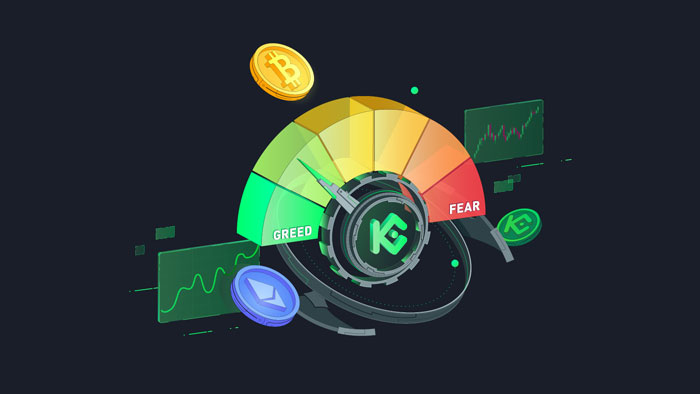The Fear and Greed Index in Cryptocurrency
Investing in the cryptocurrency market involves navigating through a complex web of emotions, sentiments, and market dynamics. To gauge the prevailing mood among market participants, tools like the Fear and Greed Index come into play. In this article, we explore the Fear and Greed Index, its significance, and why it serves as a valuable indicator in the cryptocurrency world.

Understanding the Fear and Greed Index:
The Fear and Greed Index is a sentiment indicator designed to capture the prevailing emotions of market participants in the cryptocurrency space. It ranges from 0 to 100 and attempts to quantify whether the market is in a state of fear (lower values) or greed (higher values). The index takes into account various factors and metrics to assess the overall sentiment in the market.
Key Components of the Fear and Greed Index
1. Volatility:
DeHigh volatility is often associated with fear as it indicates uncertainty and rapid price fluctuations. Conversely, low volatility may signal a period of complacency and potential greed.
2. Market Momentum:
Positive market momentum, such as upward price trends, can contribute to feelings of greed, while negative momentum, such as a prolonged downtrend, may instill fear.
3. Social Media Sentiment:
The index considers social media activity and sentiment, tracking discussions, tweets, and posts related to cryptocurrencies. Elevated social media activity may indicate increased interest and potential greed, while a surge in negative sentiment can signal fear.
4. Market Volume:
Trading volume is another factor considered in the Fear and Greed Index. High trading volumes during price increases may indicate greed, while low volumes in a declining market could reflect fear.
5. Put/Call Ratio:
The ratio of put options to call options traded on the market is factored in. A high put/call ratio may indicate fear, suggesting that investors are buying more put options (protective bets), while a low ratio may suggest greed.
6. Market Breadth:
The breadth of the market, measured by the number of advancing versus declining assets, is also considered. A market with widespread positive performance may contribute to feelings of greed, while widespread declines may lead to fear.
Significance of the Fear and Greed Index:
1. Contrarian Indicator:
The Fear and Greed Index is often used as a contrarian indicator. Extremely high levels of greed may suggest that the market is overbought, and a correction could be imminent. Conversely, extreme fear might indicate overselling, potentially presenting buying opportunities.
2. Sentiment Analysis:
By gauging market sentiment, the index helps investors understand the prevailing mood and potential reactions in the market. It provides insights into whether the market is driven by emotional responses or rational decision-making.
3. Risk Management:
Investors and traders can use the Fear and Greed Index as a tool for risk management. For example, during periods of extreme greed, it may be prudent to assess the risk of a market correction and adjust investment strategies accordingly.
4. Long-Term Trends:
The index can help identify long-term trends in market sentiment. Prolonged periods of extreme fear or greed may signal shifts in the overall market sentiment and could influence strategic investment decisions.
Conclusion:
In the ever-evolving world of cryptocurrency, understanding market sentiment is crucial for making informed investment decisions. The Fear and Greed Index, with its multi-faceted approach to capturing emotions and behaviors, provides a valuable tool for investors seeking to navigate the turbulent seas of the crypto market. While not a crystal ball, the index serves as an indicator, helping investors stay attuned to the psychological undercurrents that influence market movements.
